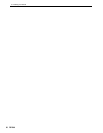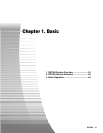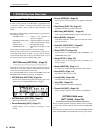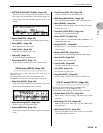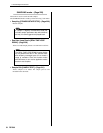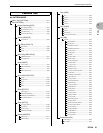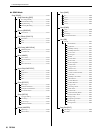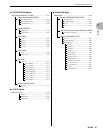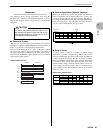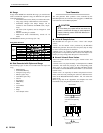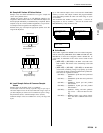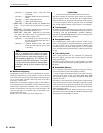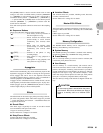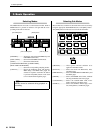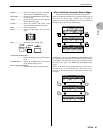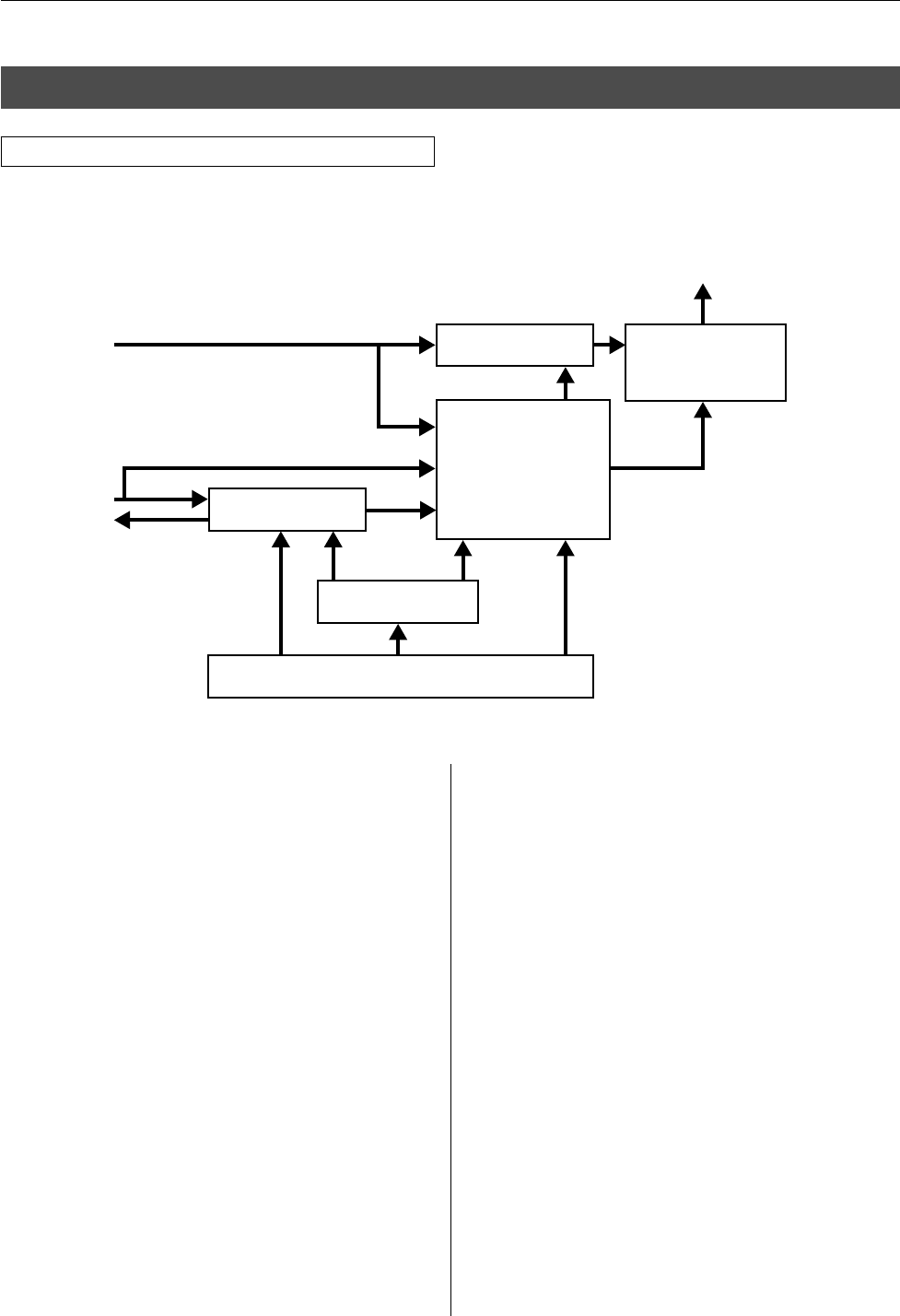
2. RS7000 Internal Structure
58 RS7000
The RS7000 system consists of 6 main functional blocks: the sequencer, the tone generator, controllers, the arpeggiator, effects, and
master EQ & effects.
● Sequencer...(Page 59)
The sequencer block records performance data from the
RS7000’s own controllers or external MIDI equipment, and plays
back the data using the internal tone generator or external MIDI
equipment.
● Tone Generator...(Page 60)
The tone generator block produces voices controlled by the
RS7000 sequencer, the controllers, the arpeggiator, or MIDI data
received from external MIDI equipment.
● Controllers...(Page 62)
This block includes all controllers which control the sequencer
and tone generator blocks: the keyboard, the assignable knobs,
sequencer buttons, etc. Performance data played on the keyboard
is sent to the sequencer and tone generator in the form of MIDI
data, and the sequencer buttons control pattern or song playback.
● Arpeggiator...(Page 63)
This function automatically plays notes and chords played on the
keyboard as arpeggios. In addition to driving the tone generator
block, arpeggio data can be sent to the sequencer block and
recorded as sequence data to a phrase or song, or transmitted to
external equipment via the MIDI OUT connectors.
● Effects...(Page 63)
The effect block can be used to apply effect processing to the out-
put of the tone generator block. Three effect stages are provided
— reverb, delay/chorus, and variation — and different effects can
be applied to each track.
● Master EQ & Effects...(Page 63)
This block applies equalization and effects to the final stereo out-
put signal. This block is ideal for “mastering” the overall RS7000
sound.
2. RS7000 Internal Structure
The 6 Functional Blocks
INPUT
OUTPUT
MIDI IN
MIDI OUT
SEQUENCER
EFFECTS
MASTER EQ
MASTER EFFECTS
TONE GENERATOR
ARPEGGO
CONTROLLERS
SAMPLING
RECORD
PLAY
BACK
PLAYBACK
PERFORMANCE
PERFORMANCE
RECORD



